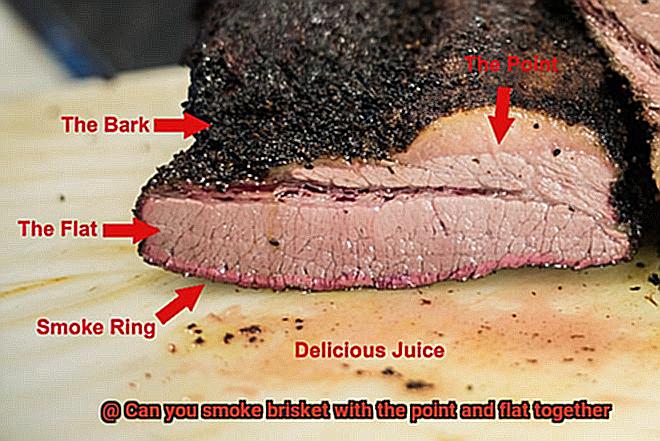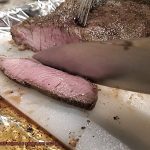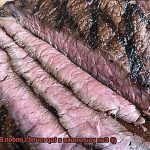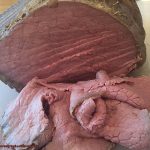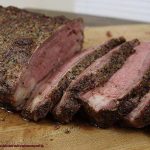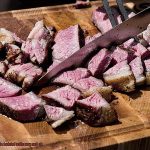Picture this: a tender, juicy brisket with a smoky flavor that melts in your mouth. It’s the stuff of dreams for any barbecue lover. But smoking brisket can be a challenging art to master. There are many factors to consider, like choosing the right wood and nailing the perfect temperature. And then there’s the question that divides pitmasters everywhere: can you smoke the point and flat together?
If you’re new to the world of barbecue, you might not know that a brisket is made up of two muscles – the point and flat. The point is loaded with delicious fat that adds flavor, while the flat is leaner but still packed with meaty goodness. Some swear by smoking them together, while others argue it’s sacrilege.
In this post, we’ll dive into the debate and help you decide whether smoking your brisket with both muscles is right for you. We’ll explore different cooking techniques, temperatures, and wood choices that can make or break your brisket’s taste and texture. And we’ll share insider tips from seasoned pitmasters so you can smoke your own perfect brisket every time.
So grab a cold one (or two), get comfortable, and let’s settle this age-old question once and for all: can you smoke brisket with the point and flat together?
Contents
What Is Brisket?
Brisket is a unique and flavorful cut of beef that comes from the breast or lower chest area of the cow. This tough and fibrous cut of meat requires slow cooking to make it tender and succulent. The brisket is composed of two main parts, the point and the flat, which are separated by a layer of fat called the deckle.
The flat is a leaner section of the brisket with a uniform thickness, while the point is fattier and has a more irregular shape. The point is also known as the “deckle” or “second cut,” and it has more marbling than the flat, which results in more flavor and tenderness when cooked.
Brisket has gained popularity in Texas-style barbecue, where it is traditionally smoked low and slow for hours until it reaches an internal temperature of around 200°F. Smoking the brisket infuses it with smoky flavor, and the slow cooking process helps to break down the tough fibers, resulting in a tender and juicy finished product.
There are two ways to smoke brisket – smoking the point and flat together or separately. Pitmasters have different preferences for this, but either way, it requires attention and careful monitoring to ensure that both cuts of meat are cooked evenly. Some pitmasters prefer to trim some of the excess fat off the point before smoking to ensure even cooking.
Smoking brisket with the point and flat together allows the flavors to meld together for a delicious and juicy brisket. It also makes for a more efficient use of space in your smoker. However, smoking them separately can allow you to control the cooking time for each cut individually.
Can You Smoke Brisket with the Point and Flat Together?
The answer is simple: smoke the point and flat together.
The point is the juicy, fatty portion of the brisket, while the flat is leaner and more tender. Combining both cuts can result in a more flavorful and moisture-packed brisket. But there’s a catch: the two cuts cook at different rates.
To ensure even cooking, trim excess fat from the point before smoking. This allows for better heat distribution and a more consistent cook between the two cuts. Additionally, some pitmasters recommend separating the cuts during cooking and recombining them later for optimal flavor and texture. This technique gives you greater control over individual cooking times and ensures that each cut reaches its full potential.
But why go through all this extra effort? The answer is simple: taste. Smoking brisket with both cuts together results in a delicious packer brisket with a juicy, tender bite. It’s worth the extra care and attention to create something truly special.
Benefits of Smoking the Point and Flat Together
This cooking technique has numerous benefits that will leave your taste buds singing with joy.
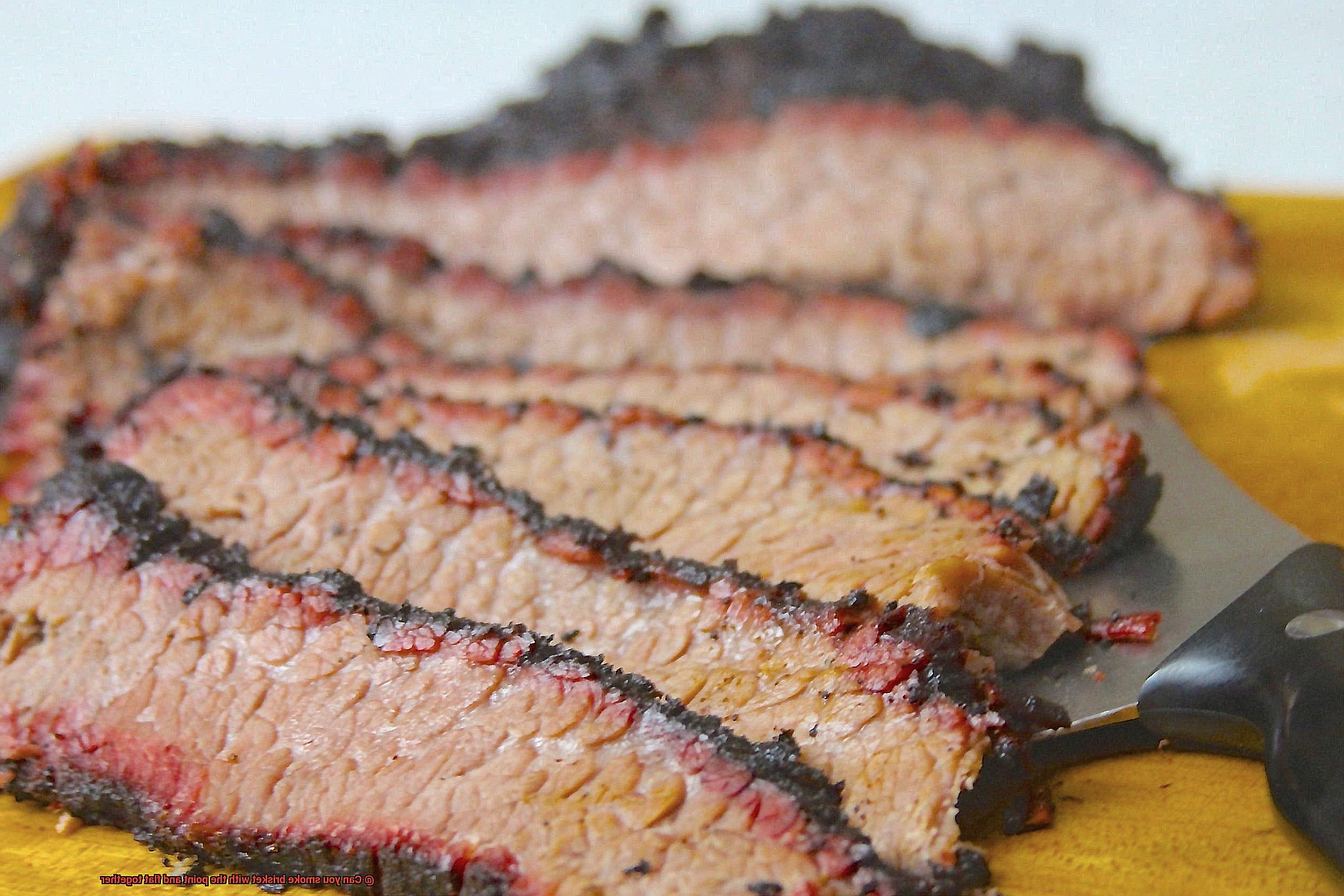
First and foremost, smoking the point and flat together keeps the meat tender and juicy. As they cook together, the juices from the point will drip down onto the flat, preventing it from drying out and resulting in a moist and succulent brisket that will have your guests begging for seconds.
- But it’s not just about texture – smoking the point and flat together enhances the overall flavor of your brisket. The point has a higher fat content than the flat, which means it imparts more flavor as it cooks. The result is a savory and mouthwatering brisket that is sure to impress even the most discerning palates.
- The benefits don’t stop there – cooking both parts of the brisket together also saves you time in the kitchen. Even cooking and faster cook times mean you can spend less time in front of the grill or smoker, and more time enjoying your delicious creation.
- And let’s not forget about presentation – smoking the point and flat together creates a visually stunning dish. The marbled effect of the two parts of the brisket cooked together creates an eye-catching masterpiece that will have your guests’ mouths watering before they even take their first bite.
Tips for Smoking the Point and Flat Together
Smoking a brisket with both the point and flat together is no easy feat, but it can be done with great success if you follow the right techniques and tips. Here are some key considerations to keep in mind:
Trim the Brisket Properly
It’s important to trim any excess fat from both sides of the meat before smoking, leaving about 1/4 inch of fat for flavor and moisture. This will help the brisket cook more evenly and ensure that both cuts of meat reach the same internal temperature at the same time. Trimming also helps to create a more attractive end product.
Season Generously
Using a flavorful rub with salt, pepper, garlic, and other spices will enhance the natural flavor of the meat. Rub it on both sides of the brisket and let it sit for at least an hour before smoking to allow the flavors to penetrate.
Maintain Consistent Temperature
Brisket requires a low and slow cooking process, so it’s crucial to use a smoker or grill that can maintain a steady temperature of 225-250°F throughout the cooking process. Fluctuations in temperature can greatly affect the final result, leading to tough or dry meat.
Wrap in Foil or Butcher Paper
Wrapping your brisket in foil or butcher paper halfway through the cooking process can help prevent it from drying out and retain moisture, enhancing tenderness. This tactic also allows for a faster cooking time, as it speeds up the braising process.
Monitor Internal Temperature
Use a meat thermometer to monitor the internal temperature of your brisket throughout the cooking process. The ideal temperature for a fully cooked brisket is around 195-205°F. Once it reaches this temperature, remove it from the smoker and let it rest for at least 30 minutes before slicing and serving.
When smoking the point and flat together, remember that they cook at different rates. The point is thicker and has more fat than the flat, so it takes longer to cook. To ensure that both parts cook evenly, trim some of the excess fat off the point before smoking. You may also need to remove the point from the smoker before the flat to prevent it from becoming overcooked.
How to Trim Excess Fat from the Point
Smoking a brisket is an art form, and the key to achieving a succulent and flavorful result is in the preparation. Trimming excess fat from the point of the brisket is an important step in this process, as it allows for even cooking and prevents the final product from being greasy or unappetizing. Here’s how to do it right.
Start with a Sharp Knife
A sharp knife is essential for trimming excess fat from the point of a brisket. A dull knife can make the process more difficult and lead to uneven cuts of meat.
Remove Large Chunks of Fat
Begin by removing any large chunks of fat that are visible on the surface of the brisket. These can be easily removed with a sharp knife or kitchen scissors.
Separate the Point and Flat
The point and flat cuts of a brisket have different cooking times, so separating them is important for even cooking. Find the seam where the two cuts meet, and use your knife to separate them. This will make it easier to trim excess fat from the point without affecting the flat.
Trim Excess Fat Carefully
Use a trimmer or sharp knife to carefully remove any remaining excess fat from the point. It’s important to work slowly and deliberately, taking care not to remove too much meat or create any unevenness in the thickness of the brisket. Use your hands to feel for areas of excess fat, which will feel soft and squishy compared to the firmer meat around it.
Leave Some Fat for Flavor and Moisture
While it’s important to remove excess fat from the point, some fat is necessary for flavor and moisture during cooking. Leave a thin layer of fat on the point to add flavor and moisture without making your brisket greasy. Keep in mind that the amount of fat can vary depending on the quality of the meat, so adjust your trimming technique accordingly.
Monitoring Temperature When Smoking Brisket
Then, you need to know one of the most crucial steps in the process: monitoring the temperature. As an expert on smoking brisket, I can tell you that this step is non-negotiable if you want to achieve a perfectly cooked brisket.
To start, we need to understand that the point and flat of a brisket are two different muscles that require different cooking times and temperatures. Therefore, it’s essential to monitor their temperatures separately. The first step is having a reliable meat thermometer that can accurately measure the internal temperature of both parts.
However, not all thermometers are created equal. For most smokers, a digital probe thermometer is the way to go. This tool allows for continuous monitoring without having to open the smoker frequently. By keeping the heat and smoke inside where they belong, you can ensure that your brisket is cooking evenly.
When monitoring the temperature, make sure to place the thermometer probe in the thickest part of both the point and flat. This will give you an accurate reading and help you determine when your brisket is ready. The ideal temperature for smoking brisket is around 225-250°F. However, keep in mind that this can vary depending on personal preference and the type of smoker you’re using.
Another important factor to consider when smoking brisket is monitoring the temperature of your smoker itself. Fluctuations in temperature can result in uneven cooking and may cause your brisket to dry out or become tough. Therefore, it’s essential to keep track of smoker temperature throughout the cooking process.
Finally, once your brisket has reached its desired internal temperature, don’t rush to serve it up just yet. Allow for a resting period so that the juices can redistribute throughout the meat. This will result in a more tender and flavorful brisket that will have your guests begging for seconds.
The Difference in Cooking Times Between the Point and Flat
Then, buckle up, because understanding the difference in cooking times between the point and flat cuts is crucial knowledge for achieving that mouth-watering, fall-off-the-bone goodness we all crave.
Let’s start with the basics. The point cut and flat cut of a brisket are not created equal. The point cut is thicker and has a higher fat content, while the flat cut is leaner and thinner. As a result, they require different cooking times and temperatures to reach that perfect state of tenderness.
The point cut needs more time to cook than the flat cut due to its thickness and high fat content. It also has more marbling, which means it can withstand longer cooking times without becoming dry or tough. On the other hand, the flat cut cooks faster because of its leaner nature. It requires less time in the smoker and can easily become overcooked if left for too long.
To ensure that both cuts reach perfection when smoked together, it’s essential to separate them during the cooking process and monitor their temperatures individually. You can accomplish this by either cutting the brisket in half or folding it over and securing it with toothpicks or butcher’s twine.
When smoking your brisket, start with a low temperature of around 225°F and gradually increase it over time. This slow cooking process allows the meat to absorb that delicious smoke flavor and become tender. Place the point cut on the bottom rack of your smoker, as it requires more heat and time to cook through. The flat cut should be placed on the top rack, where it will receive less heat and cook faster.
Now for the burning question – how long does each cut take to cook? Well, several factors can affect cooking times, such as size, smoker temperature, and personal preference for doneness. Generally speaking, the point cut can take anywhere from 8-12 hours to cook, while the flat cut can take 6-8 hours.
In conclusion, smoking brisket with both point and flat cuts is possible with careful attention to cooking times and temperatures. Here are some key takeaways to help you achieve that perfect brisket:
Techniques for Ensuring Even Cooking of Both Cuts of Meat
Smoking a brisket with both the point and flat cuts can be a culinary challenge, but there are techniques to ensure that both cuts cook evenly. As a self-proclaimed expert in smoking meat, I have researched and experimented with various methods to achieve this coveted goal. Here are my top techniques for ensuring even cooking of both cuts of meat:
- Trimming: Properly trimming your brisket is a critical first step for even cooking. Removing excess fat and silver skin from the meat will help it cook more evenly. Be sure to remove the hard fat layer between the point and flat, as this can cause uneven cooking.
- Smoker Quality: Using a high-quality smoker with even heat distribution is essential to achieving consistent cooking. Electric or pellet smokers often have better temperature control and can maintain a steady temperature throughout the cooking process.
- Rotation: Rotating the brisket during smoking is another technique for ensuring even cooking of both cuts of meat. This method exposes the point and flat to heat evenly, thereby preventing overcooking or undercooking one area. Experts recommend rotating the brisket every 2-3 hours to ensure even cooking.
- Meat Thermometer: Using a meat thermometer is an essential tool for checking the internal temperature of both cuts of meat. The ideal temperature for a perfectly cooked brisket is around 195-205°F. Be sure to check the temperature in multiple areas of the brisket to ensure even cooking.
- Resting: Allowing your brisket to rest after smoking is crucial for even distribution of juices. This ensures that both the point and flat remain moist and tender. It’s recommended to rest your brisket for at least 30 minutes before cutting into it.
QFlDnSbUecc” >
Conclusion
Smoking brisket is not for the faint of heart. It’s a delicate dance between heat, smoke, and time that requires patience, skill, and attention to detail. And when it comes to smoking the point and flat cuts together or separately, there’s no shortage of opinions.
But after careful consideration and experimentation, the answer is clear: smoke them together. Why? Because the point cut has more fat and marbling than the flat cut, which means it imparts more flavor as it cooks. Combining both cuts results in a more flavorful and moisture-packed brisket that will have your taste buds singing.
To ensure even cooking, trim excess fat from the point before smoking. This will allow for better heat distribution and a more consistent cook between the two cuts. Separating the cuts during cooking can give you greater control over individual cooking times if needed.
Smoking brisket with both cuts together not only enhances the overall flavor but also saves time in the kitchen and creates a visually stunning dish.
To achieve perfect smoked brisket with both cuts cooked evenly, use proper trimming techniques, maintain consistent temperature throughout cooking, wrap in foil or butcher paper halfway through cooking to retain moisture, monitor internal temperature using a meat thermometer, understand differences in cooking times between the point and flat cuts of meat, rotate your brisket during smoking to ensure even cooking, and allow your brisket to rest after smoking for at least 30 minutes before cutting into it.
With these tips from seasoned pitmasters under your belt, you’ll be able to smoke your own perfect brisket every time.

